#With historical context and stuff
Explore tagged Tumblr posts
Text
I don't have time to give this thought the full discussion it deserves, but lord help me, I'm begging people to be able to grasp the concept of context when engaging with takes they find in the wilds of fandom spaces.
Just had to block someone I followed for a long time on twitter because I was forced to see "Yaoi can never be heteronormative because it's always two men" on my timeline, and honestly this is such a perfect encapsulation of fandom spaces' complete inability to handle nuance and keep issues inside their actual contexts that it just triggered my fight or flight response. 😂
"Masculinity [itself nothing more than a social construct] isn't inherently required for queer men or mlm relationships" and "Yaoi developed as a genre catering primarily to heterosexual women's fantasies, thus has a long history of projecting heteronormative expectations onto queer men's relationships" are both statements that can and should coexist, just like statements such as "Dismissing female characters as nothing more than fanservice undermines their narrative contributions" can and should coexist with "The designs of female characters rarely allow women the freedom to exist outside of sexual appeal to men."
If you can't consider an issue from within the full scope of its social context, you're not ready to participate in the discourse!
Please... be quiet...
#fandom stuff#irl stuff#begging people to remember#that shipping is not activism#so that I can stop seeing one-dimensional takes#that assume statements exist in a vacuum#without the weight of broader social or historical contexts behind them#also begging young people to do some historical research#*before* weighing into debates on LGBT+ and other social issues#imagine telling gay guys in the publishing industry that all the gay romance#being written by heterosexual women with zero experience in mlm relationships#can't be heteronormative#I'm crying from laughing
81 notes
·
View notes
Text
I enjoy discourse around pretty much everything Taylor does here in this space because I can trust that everyone involved actually knows what they're talking about and has some level of investment in the fandom, but going on more algorithm-driven sites and having to see every human who ever lived spout their opinion about every breath she takes with wild amounts of unearned confidence that they know enough to be speaking is SO EXHAUSTING like truly too many people in our family business
#this is about dumb little things like literally everything from the grammys#i think its valid for more people to comment/critique more serious things like her silence on palestine and stuff#although i do think the historical context of fans who have been around and know more about her patterns should be deferred to
295 notes
·
View notes
Text
Y'know, one thing I really appreciated about the Scott Polar Research Institute was the emphasis placed on Inuit culture and knowledge.
There's a large section of the space devoted to Inuit artworks and artefacts, and it's the very first one you see as you enter the building proper. You can't miss it!
They also currently have an exhibition called 'Hidden Histories' which comprises additional labelling throughout the museum focusing on the skills and contributions of specific members of the wider Inuit community, as well as female figures in polar history and notable individuals like Matthew Henson.
I do think this could and should be expanded upon and pushed further in future - in some places it provides fascinating additional context for the items on display, but in others comes off a wee bit more like an afterthought.
Nevertheless, it's a fantastic start that I noted and very much appreciated!
#I feel incredibly strongly about intersectionality and accessibility within history heritage and culture in general#What's the point in having this sort of stuff if you just lock it away so no one ever gets to see it and learn from it?#What's the point of any of it unless every person gets the chance to see themselves and their history reflected in heritage spaces?#I've devoted my whole practice as a conservator to that principal#And I appreciate any and all effort made towards it by others#I don't know how qualified I am to speak on the subject of curation and exhibition design specifically#But I flatter myself in saying I know more about this sort of stuff than some do#And again I say SPRI your efforts are appreciated#SPRI#Scott Polar Research Institute#History#Historic Context#Historic Artefacts
19 notes
·
View notes
Note
Pre wwii what would conditions in the orphanage Tom grew up in hsve been like? (Ie in the 1926-37 period)
Honestly, conditions would've been pretty shit. Firstly disease was rife, especially as the East End (where Wool's presumably is) was a slum throughout the Industrial Revolution and into the 20th century (with it only really changing post WWII). Tom would be familiar with stuff like mumps and whooping cough, even if he never got sick himself due to magic protecting him (as we see with Harry). But they'd also be other diseases like tuberculosis, diphtheria, scarlet fever, rickets, polio and even the flu. It's likely multiple children at the orphanage would have physical disabilities due to polio maybe even with callipers (a permanent kind of splint to help people who'd suffered from polio walk). While children would often be isolated with most illnesses, it would be incredibly difficult for an orphanage to do so, and it's probable that children died as bouts of sickness and disease spread through the orphanage. Kids who were one day at dinner are gone the next.
The first legal precedent for adopting children occurs with the Adoption of Children Act in 1926, so legal adoption how we understand it today, was fairly new. Children were lined up on Sundays, washed and in their best clothes (after attending church!) for rich people to adopt, but it tended to be a way for getting free labour rather than out of an actual desire to have children to love and care for.
I'm not sure what JKR was basing her orphanage off (likely something modern), but Tom probably wouldn't have gotten his own room, even if he was considered 'insane'. There simply wasn't enough room. Children shared a dormitory, one that could be overstuffed and cramped, sometimes even with several children to a bed. Food was similar — it was a cramped long hall (almost like a smaller, horrible version of the great hall) with rows of tables and children waiting their turn for a meal. They were probably only given one or two a day; likely gruel in the morning and bread with a stew in the evening. Tom's diet would've been vegetarian because meat was insanely expensive, although he may have had meat on Christmas and potentially Sundays if the orphanage could afford it.
On that note, Tom and the other orphans would've been Christian, most likely CoE. Although Catholic orphanages did exist, Wool's is not named after a Saint and so was more likely Protestant. Tom would've gone to church every Sunday, perhaps in a chapel on Wool's grounds, although if not, it would've been at the local church. He also would've been expected to pray. He'd go to Sunday School alongside normal school (which would've been at the local public school or perhaps, if Wool's was especially large, which I don't think it was, there would've been one of the staff who could teach or they'd bring someone in). For Christmas itself, Tom would likely get an orange which was incredibly special due to his diet likely not including fruit.
Tom would've shared everything, including clothes. He probably didn't even have underwear, and may sometimes have had to wear dresses/frocks, especially when he was younger, due to a lack of clothes. These clothes would've been stiff and itchy, potentially with lice. They would've been washed once a week, as with the orphans themselves (in large buckets!), and been hung out to dry on huge lines. Depending on how many clothes there were to go round, Tom would've spent this time in underwear (although sometimes orphans didn't even have this) or in another pair of clothes that had been worn by other children hundreds of times before. It's no wonder Tom stole — he literally had nothing, not even his own clothes (and perhaps not even underwear either).
Tom would've been expected to care for children younger than him, including babies, from a very young age. Even if he didn't enjoy it, Tom would've been good with young children and it's no wonder he was able to make Head Boy at Hogwarts because of it.
The Great Depression would've made these conditions worse. Although some of the conditions would've improved over the years, the Great Depression meant that everything was more expensive. Meals were probably downsized, if not cut entirely to one a day. The amount of kids at the orphanage probably rose during this time due to parents having to abandon children, which would've been especially prevalent in the East End which, as I've mentioned previously, was just slums and dockyard. Meat probably disappeared completely from Tom's diet, even at Christmas.
All in all, Tom's early life and conditions at the orphanage were grim. Kids died around him, conditions were cramped with diseases, illness and lice, he'd not even have his own clothes, meals would be limited, he'd spend his free time looking after kids younger than him and he'd fear being adopted. The roaring twenties were shit and the thirties shitter still. Hogwarts would've been the best thing that ever happened to Tom — it's no wonder he called it his home.
#tom riddle#tom marvolo riddle#tom riddle meta#harry potter meta#hp historical context#hp meta#idk what research jkr did but she was wrong#I found parts of this with just a quick google search and other stuff I already knew#but jkr failed in the research department#tom would NOT have had his own room#also this makes dumbles treatment of tom so much worse#ask#anon ask
126 notes
·
View notes
Text
We shall at the first board that ship; then, when we have identified the box, we shall place a branch of the wild rose on it.
It really tells how impactful the novel Dracula was to the gothic genre which then fell down into what we call the literary vampire canon when it codified which objects, or methods a hunter needs to use to trap and kill a vampire.
So far we have:
Flowers like the wild rose, the mountain ash, the wild garlic to repell or trap.
Holy christian (catholic or orthodox) objects like the crucifix, the rosary, and the Eucharist to protect the victims.
The stake through the heart (still kept through literature), then cut off the head to kill the vampires.
Now, it's not a surprise that many of these are based on cultural rituals, or cultural folklore since Bram Stoker got the idea for writing Dracula from Emily Gerard's book on Transylvanian folklore titled "Transylvanian Superstitions".
What is reflected, and noted in this book is how despite the xenophobia baked in the narrative these methods have never failed, not even once. In a novel that is so modern for the era in which it was written, it would have been so tempting to "prove" how the ancient romanian methods to stop the supernatural were actually silly superstitions, and that whatever new method the main british characters came up with was actually the "true" method to kill them. Yet, it never happened.
It holds up the context with fortitude, and even tells that there are some things that rational science can't solve, nor explain; to tell that it's not only correct, but also responsible to refer to the cultural methods, no matter how "weird" they look while used because they do work, and have been working for centuries.
#Honestly after this and Carmilla and Clarimonde and Varney and the Prince (the black vampyre)#Why does it seems that a lot of new vampire stuff from these years just... Don't have methods for humans to kill them???#Like a lion and a crocodile can kill and eat a hippo but that doesn't mean that the hippo will not fuck them up given the opportunity#dracula daily#dracula#historical context
49 notes
·
View notes
Text
google, how do I get tumblr dot com to stop giving me posts about the iliad and the odyssey without blocking the tag so I can still see my very curated list of moots and follows who post about the iliad and the odyssey
#ginger rambles#Being so fr I do not want to hear about the iliad/odyssey from peeps I do not trust#I also do not want to hear people's 'hot takes' about the acheans or the trojans#I don't want to hear about athena or aphrodite or paris from people who fundamentally misunderstand their roles#I ESPECIALLY DO NOT want to hear people talking about achilles and patroclus#I log in to tumblr to gush about Apollo and my sword boys#to check on my mutuals and to occasionally be like “what a wild/interesting opinion about the gods I'm gonna look into that!”#There is so much shit on my dash that I do not need to be seeing holy shit#The crazy thing is I like the Iliad/Odyssey I want to see stuff about it since it's not my area of expertise!!#Just not from people who obviously don't give a shit about the cultural historical social or mythological context and features of the text#Also leave Hector and his family alone#Jesus
18 notes
·
View notes
Text
special editions are usually evil imo. if you love a book you should have a yellowed, battered, crumpled second-hand copy that you hunch over with a ruler and pen
#exceptions : my white 25th ann edition of the secret history . because it's beautiful and it was a GIFT.#and my illustrated edition of mrs dalloway which also has historical context. art. and news clippings and stuff
10 notes
·
View notes
Text
Hey guys wouldn’t it be silly and funny if the museum had an exhibit on art history and part of it was a painting of Ahkmenrah’s death that would, of course, come to life with the museum. Wouldn’t that be so silly and funny?
#>:)#I think about Egyptology in the NATM universe a lot actually I have a ton of headcannons#One of my favorite “imaginary fanfictions I’m going to sleep to” is “what if Larry met an Egyptologist”#Like just someone who could lend a whole lot of insight to a whole lot of stuff#I just think it would be interesting. Like what was up with Kahmunrah what were the relationships like the aftermath of Ahks death#His/the tablets/his death’s significance ect#So many I headcannons actually#I know a lot of people approach NATM with “how does Ahk fit in in irl Egyptian history”. I reject this#The way ahk is presented in NATM makes it seem like he’s a pretty and potentially historically/culturally significant figure#So I have a lot do thoughts on how he/his era exists in historical context. I think it would capture a lot of peoples imagination in univer#Natm#night at the museum#ahkmenrah
17 notes
·
View notes
Text

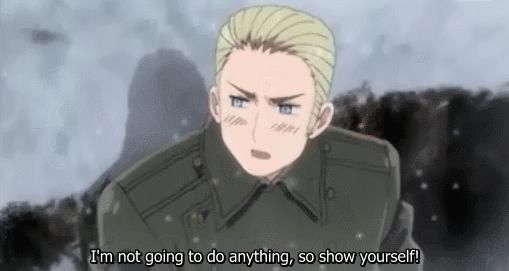
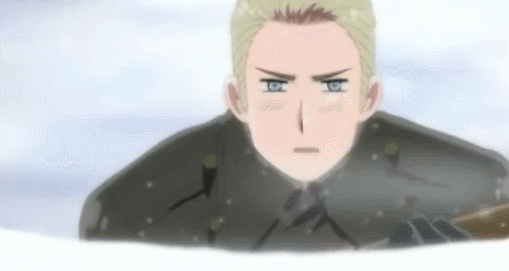






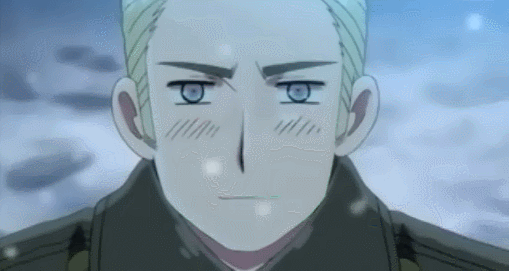
“‘Come out, English soldier; come out here to us.’ For some little time we were cautious, and did not even answer. Officers, fearing treachery, ordered the men to be silent. But up and down our line one heard the men answering that Christmas greeting from the enemy. How could we resist wishing each other Merry Christmas, even though we might be at each other’s throats immediately afterwards? So we kept up a running conversation with the Germans, all the while our hands ready on our rifles. Blood and peace, enmity and fraternity - war’s most amazing paradox. The night wore on to dawn - a night made easier by songs from the German trenches, the pipings of piccolos and from our broad lines laughter and Christmas carols. Not a shot was fired." -Peace on the Western Front: Goodwill in No-man's Land - The Story of the World War I Christmas Truce {Smithsonian Magazine}
Hetalia ~ Episode 100 ~ Japanese Version + Germany & England
Gifs by @aph-japan {Do Not Repost or Reproduce without my Permission} {Do Not Remove Caption} {DO NOT Use my Posts for overly negative commentary} [Positive or Respectful is OK!] (Please ASK to Use)
During the first eight weeks of World War I, French and British troops stopped the German attack through Belgium into France outside Paris at the First Battle of the Marne in early September 1914. The Germans fell back to the Aisne valley, where they dug in. In the First Battle of the Aisne, the Franco–British attacks were repulsed and both sides began digging trenches to economise on manpower and use the surplus to outflank, to the north, their opponents. In the Race to the Sea, the two sides made reciprocal outflanking manoeuvres and after several weeks, during which the British forces were withdrawn from the Aisne and sent north to Flanders, both sides ran out of room. By November, armies had built continuous lines of trenches running from the North Sea to the Swiss frontier.
The Christmas truce (German: Weihnachtsfrieden; French: Trêve de Noël; Dutch: Kerstbestand) was a series of widespread unofficial ceasefires along the Western Front of the First World War around Christmas 1914. The truce occurred five months after hostilities had begun. Lulls occurred in the fighting as armies ran out of men and munitions and commanders reconsidered their strategies following the stalemate of the Race to the Sea and the indecisive result of the First Battle of Ypres. In the week leading up to 25 December, French, German and British soldiers crossed trenches to exchange seasonal greetings and talk. In some areas, men from both sides ventured into no man's land on Christmas Eve and Christmas Day to mingle and exchange food and souvenirs. There were joint burial ceremonies and prisoner swaps, while several meetings ended in carolling. Men played games of football with one another, creating one of the most memorable images of the truce. Hostilities continued in some sectors, while in others the sides settled on little more than arrangements to recover bodies. The following year, a few units arranged ceasefires but the truces were not nearly as widespread as in 1914; this was, in part, due to strongly worded orders from commanders, prohibiting truces. Soldiers were no longer amenable to truce by 1916; the war had become increasingly bitter after the human losses suffered during the battles of 1915.
The truces were not unique to the Christmas period and reflected a mood of "live and let live", where infantry close together would stop fighting and fraternise, engaging in conversation. In some sectors, there were occasional ceasefires to allow soldiers to go between the lines and recover wounded or dead comrades; in others, there was a tacit agreement not to shoot while men rested, exercised or worked in view of the enemy. The Christmas truces were particularly significant due to the number of men involved and the level of their participation—even in quiet sectors, dozens of men openly congregating in daylight was remarkable—and are often seen as a symbolic moment of peace and humanity amidst one of the most violent conflicts in human history.
-from Wikipedia's article; "Christmas truce"
"Having a gunfight on {a Holy night/timeframe} wouldn't be right." -Germany
Say what you will about "Hetalia", but this sequence was semi-based on real historical events - Real events that should be much more well known.
#historical hetalia#hetalia#aph england#aph germany#arthur kirkland#ludwig beilschmidt#gereng#hws germany#hws england#geruk#hetalia: the world series#hetalia world series#hetalia world series: season 2#hetalia: season 4#the christmas truce#hetalia: jpn version#chai hetalia#chai gifs#chai hetalia gifs#chai germany#chai england#hetalia: original version#(I was Thinking About This Sequence Again {and I Am Hoping Beyond Hope Right Now for Things} as I post this but Yes)#(Its one of the ones I actually really didnt mind at all Considering the Content it Actually Got Half Right)#(This is stuff like what this series Concept Could have Done More when Handled Right)#(There is another popular post around with the scene but it's US dub version and I dont really want to further promote for Reasons)#(So Im choosing to specifically take from the original version to show what the original text also was)#(The link to the original quotes article since died but I can provide it in comments later and extra context is from Wiki which has a whole#(Page on It and its History YOU SHOULD Know REGARDLESS of the Context you Learn it from)#(I havent made edits for the fan base in ages PLEASE Dont Make Me Regret The Decision and I will be carefully watching comments on post)
82 notes
·
View notes
Text
was talking to an older northern woman today and she said look as /luːk/ (long oo) before correcting herself to /lʊk/ (to rhyme with book) and going "oh haha that's very northern" and. :(. she was speaking with a relatively northern accent anyways and i'm just wondering how much she was watering it down due to being in her job and talking to me (a southerner)
idk. there's not a moral here, it just sucks to me that ppl (have to) change their accents so deliberately like that for professionalism, jobs, talking to others, etc. having to hide your roots for social acceptance.
and i would've loved to hear her accent at its strongest.
#sewi's stuff#sociolinguistics#for context this is england#hence the accents and accent perceptions aren't what you'd expect if you're assuming this is america#southern accents are very much the influential powerful accent#especially among older folks bc like. we're richer and our accent was historically very much the “correct” way to speak#recently southern accents are seen more negatively bc of that posh association#but accent variation is still getting flattened among ppl today#partly for these same reasons - there're accents that're stigmatised (see e.g. scouse cockney older north yorkshire or west country ones)#but also ppl're moving around a lot more and ppl talk like the folks around them#so me a southerner moving up north will gain a more general accent and will influence the northerners around me also
9 notes
·
View notes
Text
...You wanna see something silly?
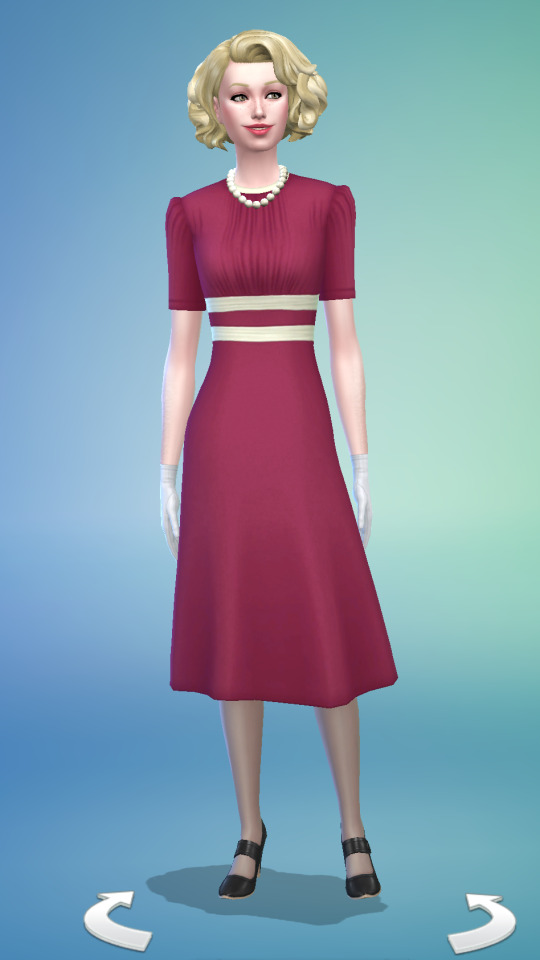


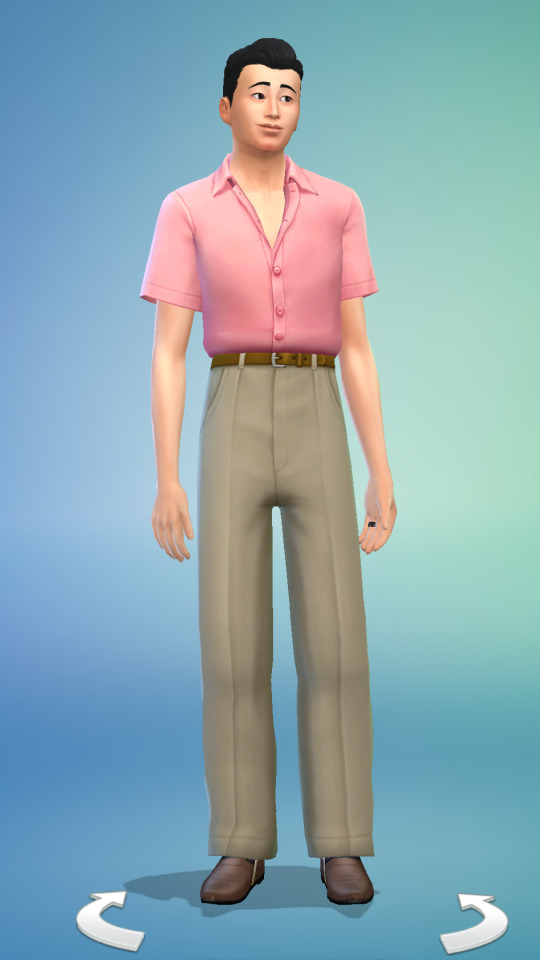


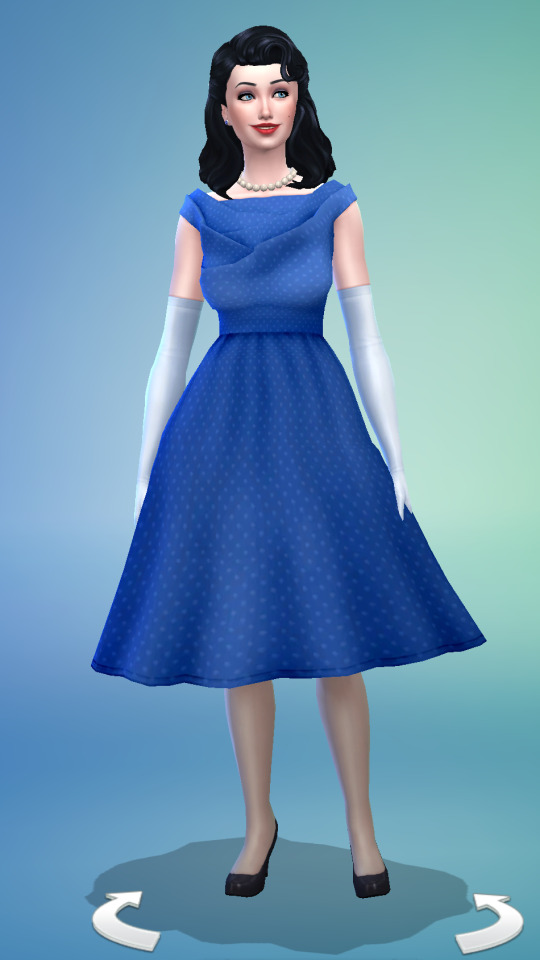


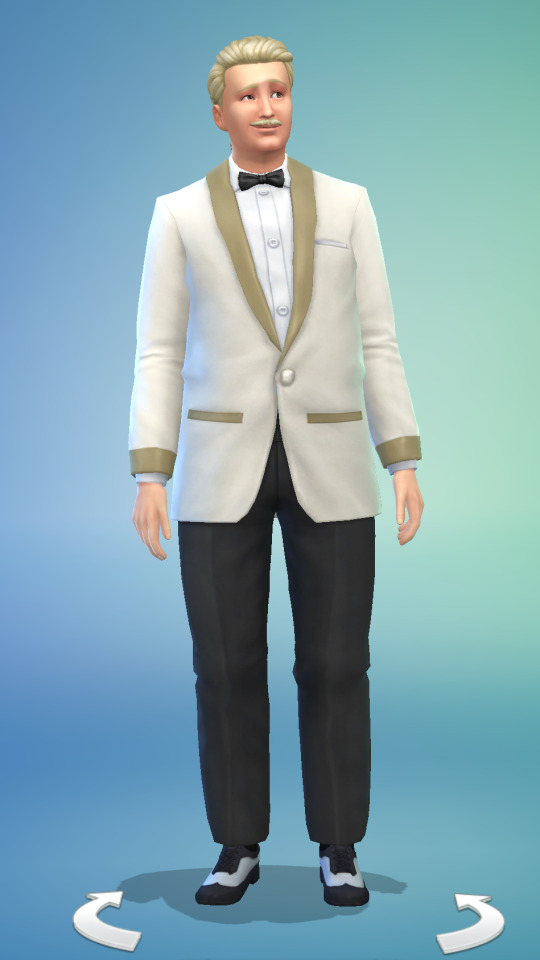
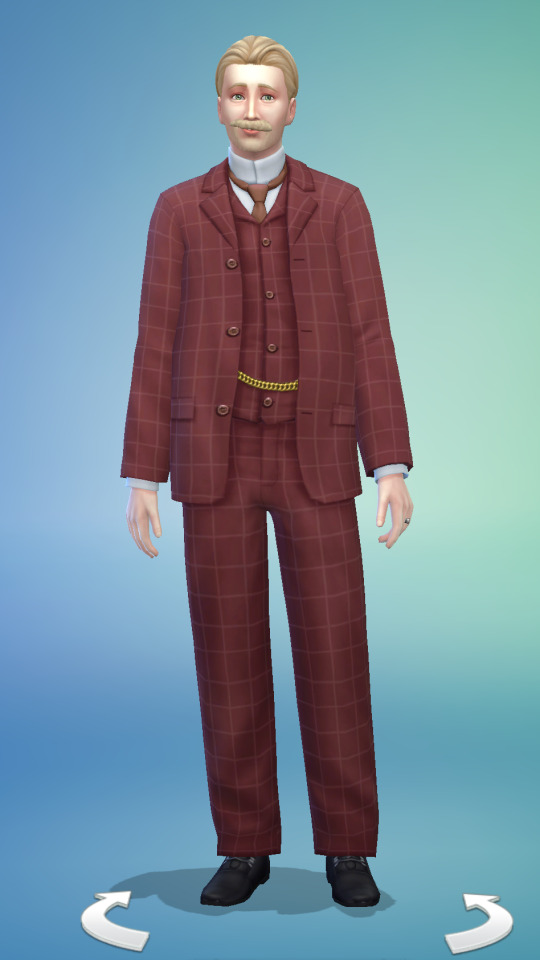

#¯\_(ツ)_/¯#what can i say i like gender swap aus#ESPECIALLY with characters based in specific historical contexts#(this is human life stuff just to be clear)#redlady speaks#hazbin posting#hazbin hotel#angel dust#alastor#husk#niffty#sir pentious#cherri bomb#vox#valentino#velvette#mimzy#rosie#carmilla carmine#genderbend
37 notes
·
View notes
Text
So guess who just learned about The Ministry of Time a couple hours ago because I received a copy 👀
#my mom said oh fuck yes I gotta get my kid who won’t stfu about the terror/franklin expedition#this time travel graham gore fanfiction#and she was CORRECT#how have I not heard of this before#TIME TRAVEL AND FRANKLIN EXPEDITION?????#MY BRAAANNDD#I gotta drop everything and read this NOW#the ministry of time#franklin expedition#the terror#< I promise not to tag those two in future posts about this book#unless I’m specifically discussing them within the context of the book#don’t want to clog up the tags because I try to keep posts about fiction and the actual historical stuff separate#unless the post covers overlap#but I also want to let other folks who might not know about this book like I did#who knows maybe I’m the last person to learn about it lmao
8 notes
·
View notes
Text
just read this part of the adventurer's bible and
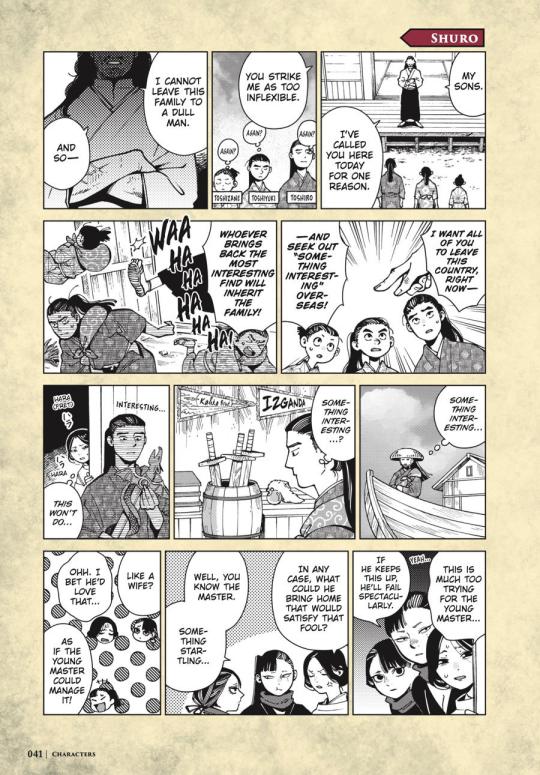
do you think toshiro was originally attracted to falin (whilst still being irritated by many of her same traits in laios) because he thought his father would find her interesting???

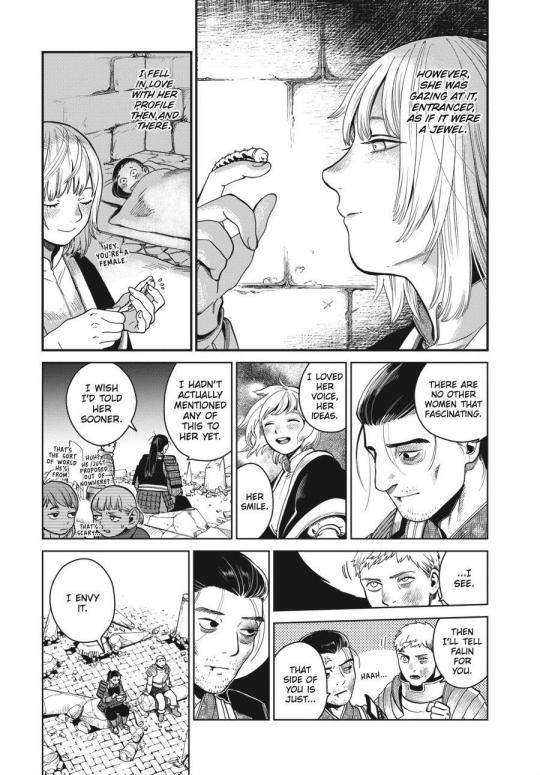
#undescribed#eliot posts#dunme#dungeon meshi#dm spoilers#idk how i feel about him#my first impression was positive bc he had a cool character design (and i found him quite handsome personally lol)#but also he was mean to laios :(#but also laios was asking him intrusive questions and messing up his name#but also he should have just spoken up instead of expecting others to just read his mind#but also dude was a nobleman in what looks like feudal era japan#which to my (albeit limited) historical knowledge had even more intense politeness rules than like. the victorian era#so if the dunmeshi world is like the irl era then it could be a cultural thing that he felt he couldn't vocalize that stuff directly#and also he was in love with falin and seemed to like her weirdgirl tendencies. which i appreciate and respect. like. me too dude.#but also how much was genuine feelings and how much was seeing her as a novelty?#BUT ALSO did his family own fucking SLAVES??? and was he cool with that???#or did i miss something/am i misunderstanding something?#like is the guy having a sixpenceee moment here#or am i just misunderstanding context/history here?
50 notes
·
View notes
Text
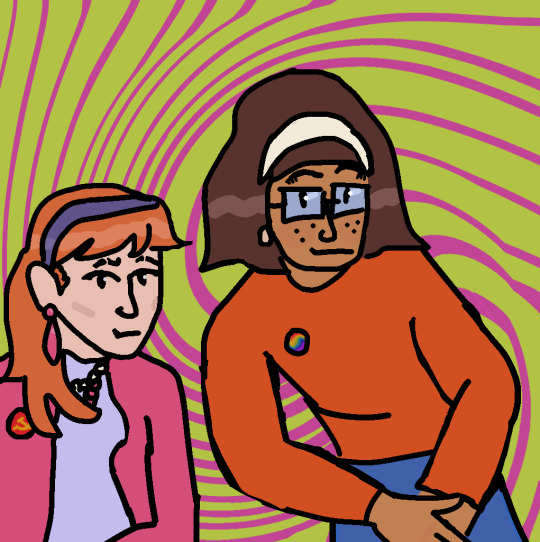
A little Scooby Doo “fanart” thing heavily based off the following pic of Alaska y los pegamoides (a New Wave group from the early 80’s in Spain 😁😁😁). Retrospectively the staring at the camera reminded me of the intro shot in the original scooby doo where Velma is reading a book and is at the centre. :-)

#Have not posted in a while I am just having my silly summer times :-)#Btw yes I drew Velma as south Asian but not bcos of “Velma 2023” (😵😵) it is simply something I thought looked cute 😁😁#Alaska y los pegamoides#Scooby doo#Daphne Blake#Velma Dinkley#m87 stuff#YES daphne is a communist. YES velma is wearing a pride pin. They are very politically conscious and are enjoying the Movida Madrileña#(Note: I am making all of this up. I like Spanish history :-P)#art#vaphne#sort of !!#EDIT: i have just seen an excellent post discussing the problematic connotations of the sickle communist symbol (USSR and its disgusting —#— history in the countries it colonised and exploited etc.) Just to be clear I am using the flag in this context as a historical detail—#— since in late 1970’s spain Spanish leftism would have used this symbol no problem. I don’t know if that is an adequate contextualisation—#—if anyone who wants to chip in would like to send me an ask pls do :-)
29 notes
·
View notes
Text
writing about historical events in my dissertation but not being allowed to talk about them in depth because i do a social science now and it's ''"not relevant""

#i have COPIOUS footnotes#the body text is 'this happened and then this happened'#and my footnotes are 'x person presents a different perspective in their account which is interesting because-'#also one of the historical people i'm talking about was a complete bastard#and if this were a history essay i would be allowed to (probably even expected to) call him out for it#but bc this is a social sciences dissertation and the history stuff is just context i can't say anything 😔#i need to be doing history again i fear#let me research and write about historical events again i'm begging 😭#🧃
4 notes
·
View notes
Text
so crazy that medieval occult manuscripts are, like, hard to read
#remember when hellers were getting into gnosticism. i feel like that#truly sinking my teeth into this stuff ✌️ but also im trained so i at least have historical / religious context for all this
2 notes
·
View notes